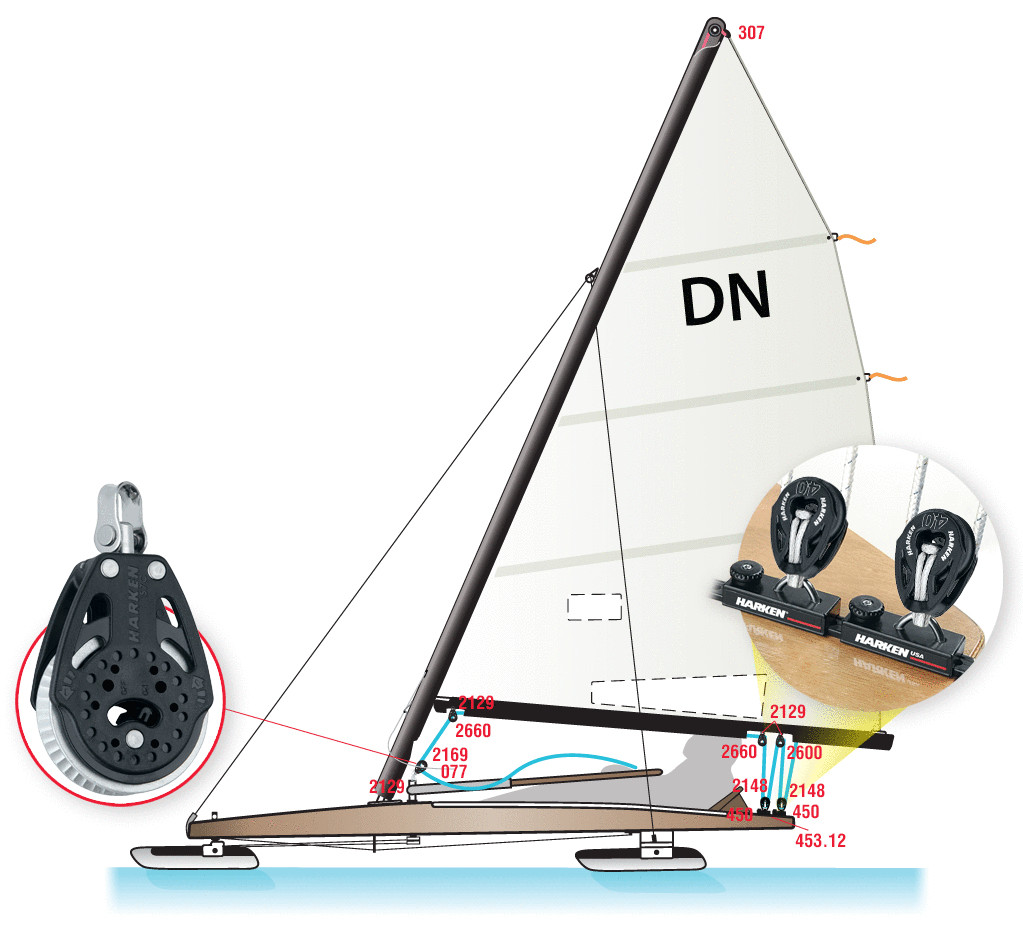
- An ice boat has four basic parts—the hull, the runner plank, three skates (or runners), and a sail.
- Ice boats can reach speeds of more than 140 miles per hour.
- There are two methods of boating: sailing downwind or going upwind.
- There are several upcoming ice boating competitions in the U.S. for 2023.
Imagine feeling the breeze rush against your face as you glide across the ice at invigorating speeds. Welcome to the world of ice sailing, also known as ice boating or ice yachting—a fast-paced, thrilling winter lake sport enjoyed worldwide. In the United States, many northern lake destinations—such as Michigan, Wisconsin, Minnesota, Ohio, Indiana, and Illinois—feature lively ice sailing clubs and exciting annual competitions. Perhaps you’ve wanted to visit one of these wintry havens and try the sport for yourself. If so, check out our intro to ice sailing before you go!
What is an Ice Boat?

An ice boat has four basic parts—the hull, the runner plank, three skates (or runners), and a sail. The hull must support one or two crew members and have floating capabilities in case it slips into the water. Historically, ice boats have utilized a wooden hull, but today’s vessels incorporate fiberglass or laminate.
The runner plank rests at the stern of the boat and is made of wood, laminate, or metal. Generally spanning 6.5 feet long, the runner plank lies perpendicular to the boat’s main axis. Additionally, three skates—also called runners—attach to the principal runner plank. Two of these smaller runners connect to each end of the main runner and function like large ice skates. In addition, the steering runner joins the bow and features a parking brake, preventing the wind from moving the boat. The steering runner is especially useful in keeping the boat in place before the race begins.
Lastly, the sail—crafted with canvas or synthetic fabrics—powers the boat’s speed. The sail functions as the vessel’s “engine” and can span 35–1,000 square feet according to the boat’s size.
How to Ice Sail

If you live in a lake area with plenty of ice and snow, the ice sailing opportunities are endless. Plus, you don’t have to worry about air pollution when you engage in this pastime. Since ice sailing is wind-powered, it is an extremely green sport.
Ice boats can reach speeds of more than 140 miles per hour, therefore, it’s essential to take some necessary precautions. If you’re new to the sport, IceBoat.org recommends purchasing an inexpensive DN-class boat, which is fairly easy to navigate and transport. They also advise racing with an ice yacht club for a couple of seasons. Then, after you become acclimated to the sport, you can upgrade your vessel and start boating solo.
When it comes to navigating, an ice boater must skillfully direct the vessel, capturing enough wind to generate velocity and power. The sail propels the boat at different speeds using two methods: sailing downwind or boating upwind. When an ice boat sails downwind, it is pushed along by the breeze and cannot exceed the wind’s velocity. However, when sailing upwind, the ice boat uses a zigzagging technique, gaining traction from the force of its own motion to augment the velocity of the wind.
Ice Sailing Competitions

Throughout the year, various ice sailing clubs around the world host large tournaments. In the United States, you will mostly find these gatherings in Michigan, Wisconsin, Indiana, Illinois, Ohio, or Minnesota. Check out a few of the upcoming U.S. tournaments here.
With our intro to ice sailing, now you know what to do and where to go. So what are you waiting for? Grab your ice boat and hop on the lake!
FAQs
What are the main parts of an ice boat?
An ice boat has four basic parts—the hull, the runner plank, three skates (or runners), and a sail.
How big are the sails on ice boats?
The sail functions as the vessel’s “engine” and can span 35–1,000 square feet according to the boat’s size.
How fast can ice boats go?
Ice boats can reach speeds of over 140 miles per hour.
What are the sailing methods for ice boating?
The sail propels the boat at different speeds by using two methods: sailing downwind or boating upwind.
What is sailing downwind when ice boating?
When an ice boat sails downwind, it is pushed along by the breeze and cannot exceed the wind’s velocity.
What is sailing upwind when ice boating?
When sailing upwind, the ice boat uses a zigzagging technique, gaining traction from the force of its own motion to augment the velocity of the wind.

